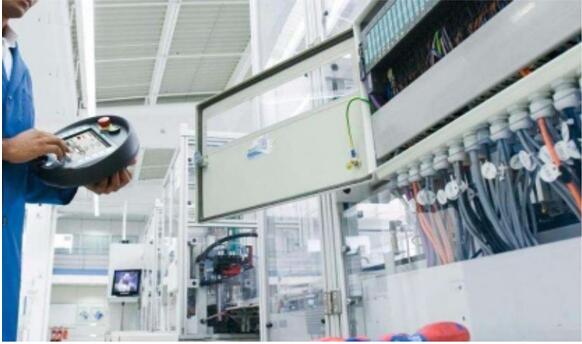A. What is a cross-section profile scan?


The core of cross-sectional contour scanning is to extract information about the shape of the boundary of an object in a certain plane (or spatial location). For example, when a part is cut with a knife, the edge contour at the incision is the contour of the cross-section; in medical CT scanning, each layer of the image is a cross-section contour of human tissue. With the contour data of multiple cross-sections, the three-dimensional structure of an object can be reconstructed or its internal features can be analyzed.
B. Cross-sectional profile scanning program
1. Mechanical contact scanning
By touching the surface of an object with a probe (e.g. CMM), the coordinate position of the probe on the cross-section is recorded and a contour line is generated. It is usually applied to high precision (micron level), does not require work efficiency, and is suitable for small-lot, high-precision parts inspection (e.g., verification of cross-section dimensions of precision mechanical parts).
2. Optical non-contact scanning
① Laser scanner: emits a laser beam to the surface of an object, calculates the 3D coordinates of the surface points by receiving the reflected light, and scans along the direction of the cross-section to obtain a point cloud of the cross-section's contour.
② Structured Light Scanner: Project a specific pattern of light (e.g., stripe, grid) onto the surface of the object, capture the deformed light pattern through the camera, calculate the surface topography, and extract the cross-section contour.
However, it is only suitable for high efficiency, non-contact (suitable for soft or fragile objects), but is affected by surface reflection and color, and the accuracy (millimeter to micron level) depends on the performance of the equipment.
C. Application Scenarios
1. Industrial manufacturing and testing
① Parts Inspection: Scan the cross-section contour of the parts and compare it with the CAD design model to verify whether the dimensions are qualified (e.g., the diameter of shaft parts, the width of keyways).
② Reverse Engineering: Scanning the cross-section of existing physical objects (e.g. cultural relics, competitors' products), extracting contour data, reconstructing the 3D model and optimizing the design.
2. Archaeology and conservation
Non-destructive scanning of cross-sections of artifacts (e.g., pottery, bronzes) to analyze the internal structure (e.g., traces of restoration, fabrication process) and to assist in the conservation and study of artifacts.
D. Differences with 3D scanning
Cross-sectional contour scanning is a subset of 3D scanning: while 3D scanning acquires 3D point cloud/body data on the surface or inside of an object, cross-sectional contour scanning extracts 2D contour information from it for a specific cross-section. For example, 3D scanning of a cup yields an overall point cloud, and cross-section contour scanning extracts the circular contours of the cup's mouth and bottom.
Product recommendation
TECHNICAL SOLUTION
MORE+You may also be interested in the following information
FREE CONSULTING SERVICE
Let’s help you to find the right solution for your project!


 ASK POMEAS
ASK POMEAS  PRICE INQUIRY
PRICE INQUIRY  REQUEST DEMO/TEST
REQUEST DEMO/TEST  FREE TRIAL UNIT
FREE TRIAL UNIT  ACCURATE SELECTION
ACCURATE SELECTION  ADDRESS
ADDRESS Tel:+ 86-0769-2266 0867
Tel:+ 86-0769-2266 0867 Fax:+ 86-0769-2266 0867
Fax:+ 86-0769-2266 0867 E-mail:marketing@pomeas.com
E-mail:marketing@pomeas.com
